G.Skill Phoenix Pro 120GB SandForce SF-1222 SSD Review
G.Skill Phoenix Pro – Real World Testing
One of the most common operations performed on a PC is moving/copying files. Using a free application called Teracopy, we copied large numbers of two file types from one folder to another on the same drive. Teracopy allows us to objectively measure the time of transfer and using the same drive prevents other devices from tainting the outcome. The operation requires the drive to perform both sustained read and writes simultaneously. The first was a 2.12GB collection of mostly JPG files (with a few .MOV files thrown in) of variable size which were taken at CES in January of 2010.
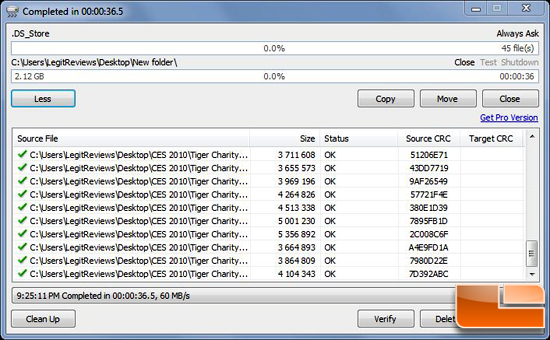
The second was a collection of MP3 files of various sizes that totaled 4.65GB collectively. These file types were chosen due to their wide use and mixture of file sizes and compression levels.
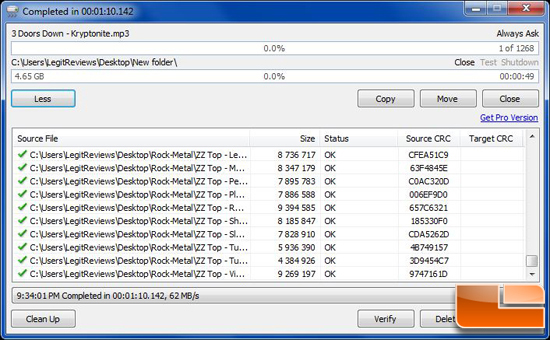
Install Results: I continue to be impressed with the pure speed of SSDs overall. Moving over 4GB of data in just over a minute is very impressive. The Phoenix Pro performs right with the comparably configured drives in the comparison.
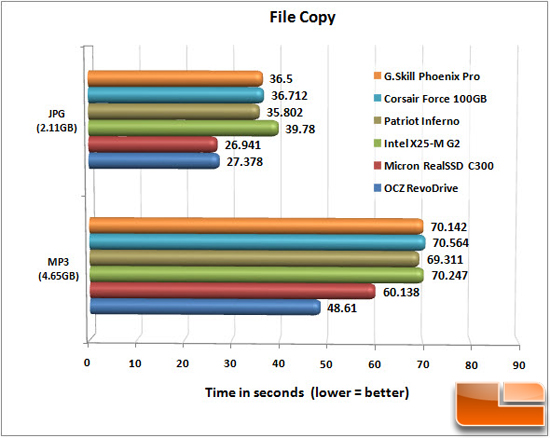
We also timed the installation of a few rather lengthy applications/suites as app installs is something everyone does and waiting for completion can be a drag. We used Adobe Dreamweaver CS5, Microsoft Office 2010 Professional and Futuremark’s 3DMark Vantage as our test subjects with all install settings at default. Both were installed from an installer located on the target drive itself as installing from another drive, especially an optical drive, would cause a bottle-neck that would corrupt the results. The timing for these had to be done via stopwatch so there should be about a half second +/- error margin. Again, with the source and target drives being the same, concurrent read/write activity is required.
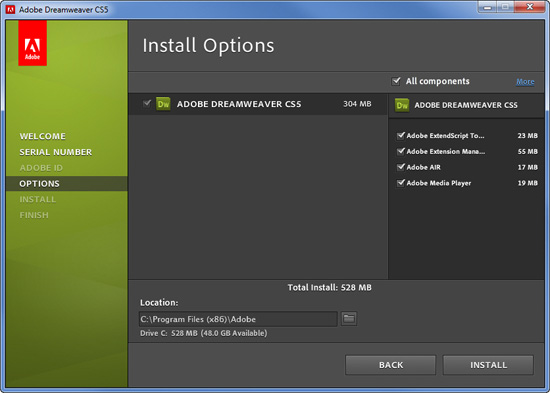
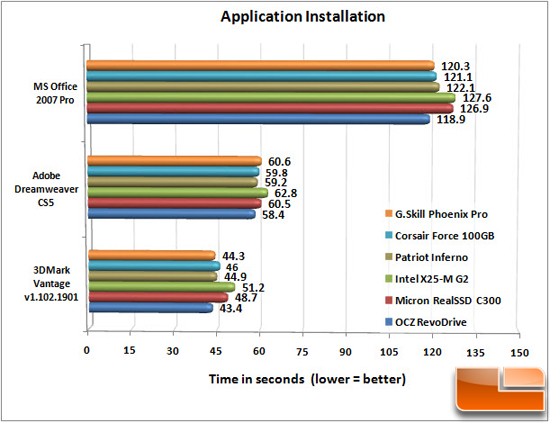
Install Results: Great performance here again that shows the Phoenix Pro in a dead heat for the best times.
Last but not least, everyone’s favorite is the Windows start up/shutdown time check.
This test was also performed with a manual timing method via stopwatch and should also carry the same half second +/- margin of error. The methodology employed was to force the BIOS to allow user selection of startup drive after load and begin timing from the time the enter button is pressed until the Windows desktop appears on the screen. All of the instances of Windows were identical and freshly installed with only the NVIDIA video driver manually installed.
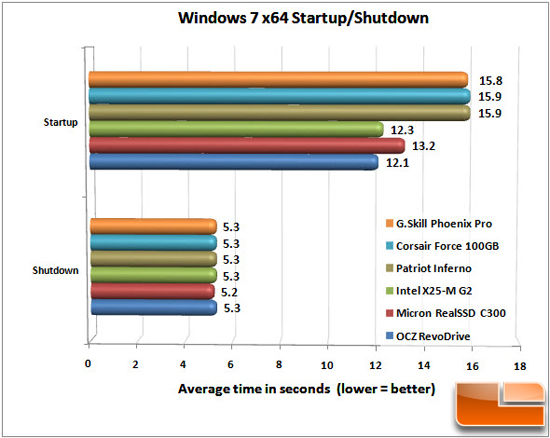
Install Results: Not much difference at all here for the three SandForce SATA II drives. With the margin of error for the manual timing, the difference is insignificant to say the least.
We’ll wrap this with a look at the total drive capacity and our final thoughts.

Comments are closed.